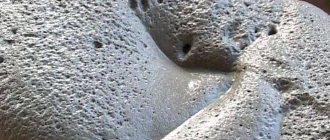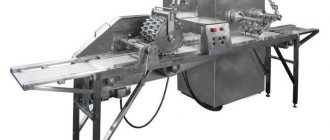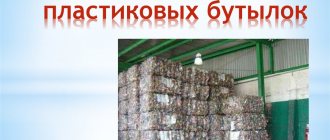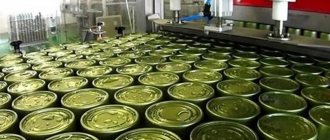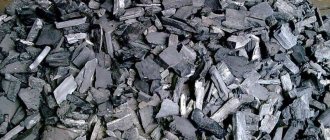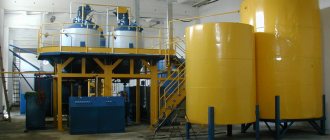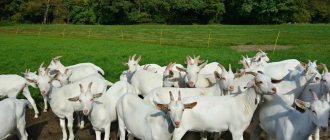Home |Cement |Cement manufacturing technology
Date: January 9, 2019
Comments: 0
It is difficult to find a person who is not familiar with such a popular building material as cement. Not a single stage of the construction of an object, from laying the foundation to finishing work, can be completed without the use of this binder. In industrial and civil construction, bricks, foundation blocks, and wall panels are used. But how to ensure that these components form a single structure, strong and durable. This is where cement comes to the rescue. Today, this is the only substance that can create a monolithic product from any set of materials, which over the course of tens and hundreds of years only increases its strength characteristics.
But what percentage of people wondered what cement is made from, what components make this material irreplaceable? Probably not many. Let's try to briefly understand this issue and describe how cement is made.
General information
Cement is an inorganic substance. It acquires astringent properties when interacting with water or aqueous solutions of salts. Note that this is the only binding material that increases strength characteristics under wet conditions. This is how it differs from gypsum, which hardens in air.
Today, most multi-storey buildings are built thanks to concrete structures and cement pouring
So, what is cement? This is crushed mineral raw materials with special modifying additives. Depending on the filler, we distinguish the following types:
- Portland cement.
The most widespread type, including up to 80% calcium silicate. The scope of application is not limited. It is used both for basic work and for finishing work, since it is possible to add dyes that increase decorative properties. - Aluminous.
A distinctive feature is accelerated hardening, which makes it possible to use it on objects requiring urgent restoration (liquidation of damage after accidents, fires, floods). - Magnesian.
The main element is magnesium oxide, which adds strength and increases adhesive properties to wood. Disadvantages include an increased likelihood of corrosion, which narrows the scope of application. - Acid resistant.
The filler is sodium hydrosilicate, which is sealed with liquid glass. Serves as a basis for acid-resistant concrete and mortars. Relevant for the construction of chemical industry facilities.
Cement composition
The cement mixture is obtained by mixing a number of components:
- Clinker. The substance is based on clay and limestone and is used to determine the strength of a material. Produced by firing clay and limestone. Under the influence of high temperatures it melts, transforming into a granular fraction with a high silica content. Then it is fired again. Plaster. Used to regulate the cement hardening process. It is introduced into the composition in an amount of no more than 5%. Active mineral supplements. They help improve the properties of the cement composition and expand the scope of its use.
In the manufacture of products, other additives can be used, for example, oxides of calcium, magnesium, phosphorus, and salts. But they are used in small quantities. They are added in order to obtain established characteristics - heat resistance, acid resistance, etc.
If the technological process allows, then plasticizers can be introduced into the composition.
Their use helps to obtain the following performance characteristics:
- Prevent moisture from penetrating into the structure. Reduced hardening time. Increased strength. Resistance to temperature fluctuations and the influence of aggressive environments.
Depending on the amount of additives, several types of product are distinguished:
- Portland cement. The most common modification, which contains about 80% calcium silicate. Used in various construction works. The addition of coloring substances improves the decorative properties of cement, allowing it to be used for finishing work. Aluminous. Characterized by accelerated hardening. Thanks to this property, it is used on objects that require urgent restoration, for example, eliminating damage after accidents or fires. Magnesian. The main component is magnesium oxide, which adds strength to the composition and increases adhesion to wood. However, due to its increased susceptibility to corrosion, it is rarely used. Acid resistant. During the manufacturing process, a filler is added to the composition - sodium hydroxylicate, which is sealed with liquid glass. Used in acid-resistant concrete and mortars.
Structure
Cement production is carried out on the basis of the following components:
- clinker, the basis of which is clay and limestone. Clinker determines the strength of the material and is produced by firing clay-containing and limestone raw materials. When heated, it melts, forming a granular composition with a high concentration of silica, crushed, and re-firing;
Cement is produced in factories on an industrial scale
- gypsum, which affects the duration of the hardening process of the cement composition. It is administered, according to the recipe, as stones or ready-made powder, the concentration of which does not exceed 5%;
- modifying additives that expand the range of use of the material by acquiring special performance properties.
What will be required to implement the business?
To set up a mini-factory you will need:
- limestone crusher;
- clay mixing mill;
- a mill that helps grind products;
- rotary kiln required for firing;
- ball tube mill for grinding and mixing raw materials;
- an industrial refrigerator where the clinker will be cooled;
- sludge basins and tanks;
- electrostatic precipitators;
- waste gas bunker;
- equipment for packing bags.
To save on setting up a production workshop, you can order used equipment.
The prospects for the development of a business depend on the type of raw material extraction. To begin with, the development of a limestone deposit and clay is underway. The quarry can be bought or rented. The extracted material must be crushed to pieces with a diameter of 10 cm. If the plant is remote from the deposit, then the raw materials must be transported to the work shop. Limestone is dried and crushed using special mills. Then it is mixed with the rest of the raw materials. Extraction, transportation - all this entails serious financial costs. At the initial stage of a business, it is better to purchase raw materials. To do this, you should look for wholesale suppliers.
For production you will need (per month):
- ash – 6,508 tons;
- gypsum stone – 752 tons;
- limestone - 14,758 tons;
- hard coal – 3667 tons.
To produce cement you will need a room of approximately 400 square meters. m. It should have ceilings more than 4 m high. It is best to look for a room outside the populated area. There must be good ventilation inside the building.
The production requires approximately 80 workers and 5 administrative and management personnel.
Raw materials used
Mass production of the material is carried out at specialized enterprises. You can try to make cement yourself, so to speak, for personal needs. But this is a thankless job, requiring special knowledge of production technology and precise adherence to proportions, which is difficult to achieve at home.
It is better to use a product manufactured under the supervision of specialists on high-performance equipment. To make a cement composition, the following special components are required:
- natural carbonate raw materials (limestone-shell rock, calcareous tuff, chalk). The share in the total volume of the product is 74-82%. The structure of the starting material determines the degree of effectiveness of the interaction of the ingredients used during firing;
- clayey rocks (shale, loam, loess). The percentage of clay-containing rock is 26-18%.
For the production of cement they use: a mixture of limestone and clay - clinker
Special Additives
Other components (salts, oxides of calcium, magnesium, phosphorus) are also used in production, but their concentration is insignificant. Additives are added to obtain certain properties - heat resistance, acid resistance, etc. To be able to regulate the setting time of the cement mortar, gypsum is added during production.
The material is manufactured with the mandatory introduction of special additives that increase the performance characteristics of the composition. The production technology involves the use of the following corrective components:
- Additives based on fossil raw materials with a high concentration of alumina.
- Improvers containing silica.
- Ingredients obtained from clay rocks.
- Components obtained from apatites and fluorspar.
The introduction of plasticizers provided for by the specifics of the technological process makes it possible to ensure the following performance characteristics of the composition:
- the ability to resist the penetration of water into the massif;
- reducing the duration of hardening of the composition;
- increased strength of the monolithic mass;
- resistance to long, repeated stages of freezing followed by thawing;
- resistance to the influence of liquid and gaseous aggressive media;
When mixing the solution with your own hands, you must strictly observe the proportions of the components and take care of their quality
- improved adhesion to reinforcement, reliably protected by the concrete mass from the negative effects of corrosion;
- viscosity and mobility of the concrete solution, facilitating masonry and pouring monolithic structures due to the elasticity of the mixture.
Features of the composition
Regardless of the technology used to make cement, clinker includes the following ingredients:
- Calcium silicates, which play a key role in ensuring strength characteristics in the manufacture of cement compositions. According to the recipe, alite is used in the clinker, the share of which is 50-70%, or belit with a concentration reduced to 30%.
- Calcium aluminates that quickly react with water, affecting the hardening process of the cement composition. Their number ranges from 5 to 10% of the total volume of clinker.
- Ferrite components, in the form of calcium aluminoferrite, introduced in a volume of 10-15% of the total mass.
- Various compounds of calcium oxides, alkaline sulfates, the concentration of which is insignificant.
The concentration of components depends on the specifics of the technological process and the type of material being produced. The main components in the production of cement are limestone and clay materials, which determine the quality of the clinker used in the production process.
The most difficult thing is to make cement for stone laying and plastering work.
What is cement made from: the main raw material
The main raw materials for cement production are clay and carbonate rocks, as well as other materials of natural origin and industrial waste, such as slag.
Rocks of carbonate origin include limestone, chalk, marl and dolomite.
The physical properties of these rocks greatly influence the quality of the cement produced. Rocks that have a crystalline structure interact worse with other components during firing compared to rocks that have an amorphous structure. The properties of these rocks are as follows:
- Chalk is a soft sedimentary rock, which is limestone with smearing properties. Chalk can be easily crushed. This material is an important component when creating a cement mixture.
- Marl is a rock of sedimentary origin, located between lime and clay in its properties. It comes in both solid and loose state. The density and moisture content of this rock varies depending on the percentage of clay it contains.
In the production of cement, rocks such as clay, loess, shale and loess-type loams are used. These materials have the following properties:
- Clays are sedimentary rocks that contain minerals with different properties; when wetted, they become plastic and swell. If cement is produced using the dry method, the plasticizing ability of clay makes it possible to granulate flour and create briquettes. Loam is ordinary clay that has particles of dust and sand in it.
- Shale is a rock with high density and hardness. The plates that make up this rock are small in thickness. Compared to clay, shale is not as water-intensive and has a more stable composition.
- Loess consists of tiny particles of minerals such as quartz, feldspar, and has high looseness, porosity and low plasticity. Between loam and loess in properties there is loess-like loam.
Production specifics
The production of cement involves the following production stages:
- extraction of raw materials containing gypsum, clay, limestone;
- crushing the extracted limestone, ensuring the required moisture content of the resulting product;
- crushing limestone mass, mixing with clay. The ratio of limestone and clay varies depending on the characteristics of the raw materials used, approximately corresponding to a proportion of 3:1. The result is the production of combined, dry or wet sludge;
- firing of the raw material mass at temperatures up to 1.5 thousand degrees Celsius, at which sintering of the sludge occurs. The composition turns into a granular fraction called clinker;
- grinding clinker to a powdery fraction using special mills;
- dosing and mixing ingredients according to the brand of future cement. The mixing process involves the introduction of up to 5% gypsum and special mineral additives.
Production licensing
Since 2007, according to the order of the head of Rostechnadzor, all facilities for the enrichment and processing of raw materials for cement production and the process of obtaining cement are subject to mandatory registration in the state register of hazardous production facilities.
In cases where independent extraction of raw materials from a quarry is planned, a license from Rosnedra is also required. The need to license this type of activity is stated in the Law “On Subsoil” (Article 18). The validity period of such a document is until the field is fully developed.
The algorithm of actions includes the following steps:
- site selection;
- drafting and approval of the project;
- collection of necessary documentation.
When choosing a site, you need to check that it is included in the List of subsoil sites of local significance. Further approval of the project is carried out according to the following scheme:
- development of a geological research project;
- conducting an examination of the geological exploration report;
- obtaining a mining allotment act and a Protocol from the local government authority responsible for the development of deposits.
Mining licenses are issued by the Ministry of Ecology and Natural Resources. The Federal Agency for Subsoil Use (Rosnedra) is directly involved in this process. The package of documents for obtaining a license includes:
- a statement with information about the company and the site for the extraction of raw materials;
- title documents for this site;
- confirmation of the availability of the necessary equipment and employees of appropriate qualifications at the enterprise;
- certificate of financial condition of the LLC.
Licenses are issued in two ways:
- with an open auction;
- in a non-auction manner.
The first option is preferable, and the second is applied only in certain cases prescribed in Article 19 of the above Law “On Subsoil”.
Nuances of technology
Depending on the characteristics of the raw materials used, the cement composition is produced using proven technologies, which provide various methods for preparing the initial components.
The slurry used can be obtained as follows:
- Using a dry method, which significantly reduces the cost of cement production. A feature of the dry method is a shortened production cycle, combining a number of technological stages. The process of grinding and drying the ingredients is carried out simultaneously in a special mill, into which gases heated to a high temperature are supplied. The resulting charge fraction represents a powdery composition with the required moisture content.
- Using wet technology, according to which chalk is used instead of lime. The chalk is mixed with the components specified in the recipe and crushed in a humid environment. The result is a batch with a moisture content of up to 50%. The charge mass is fired, followed by grinding of the resulting clinker.
- Using a combined technology that combines elements of dry and wet methods. The process involves both moistening the dry composition, subsequent granulation, annealing, and drying the semi-dry charge composition produced by the wet method.
Manufacturing enterprises produce cement taking into account the features of existing equipment and proximity to the place of extraction of raw materials. At the same time, the needs for specific brands of products are taken into account.
Cement production in factories
At this point in time, cement manufacturers use three binder production technologies:
- Wet method.
- Dry method.
- Combined method.
It is worth noting that “dry” technology is used by foreign cement manufacturers: Egypt, Turkey and China. “Wet” technology is traditionally used by domestic cement plants.
cement production cycles
Dry method
There is no need to use water here. The source material (clay and limestone) is crushed using special equipment. They are dried and ground into fine flour, mixed pneumatically and served for firing.
The cement clinker formed as a result of firing is crushed to the appropriate fraction, packaged and sent to the finished product warehouse. This method allows you to reduce production costs, but is characterized by “capriciousness” regarding the homogeneity of the starting materials and is an environmentally hazardous option.
Wet method
The undeniable advantages of this method lie in the possibility of accurately selecting the composition of the starting material with high heterogeneity of the starting components: rock, type of rock, etc. The starting material (sludge) is a liquid substance containing up to forty percent moisture.
Before making cement, the composition of the sludge is adjusted in special technological pools. After aging the raw materials in a pool, they are annealed in special rotary kilns and then crushed.
The wet method requires a greater consumption of thermal energy spent on drying the feedstock. This significantly increases the cost of cement production, but the quality of the final product does not suffer from possible heterogeneity of the clinker, as with the wet version.
Combined methods
This technology is based on the wet type of binder production. The intermediate substance is dehydrated using a special technology. The clinker is granulated with the addition of water, after which it is annealed and subsequently crushed into one or another grade of cement.
Among the advantages of the combined method of cement production: high yield of “usable” cement, the possibility of using waste from the metallurgical industry.
